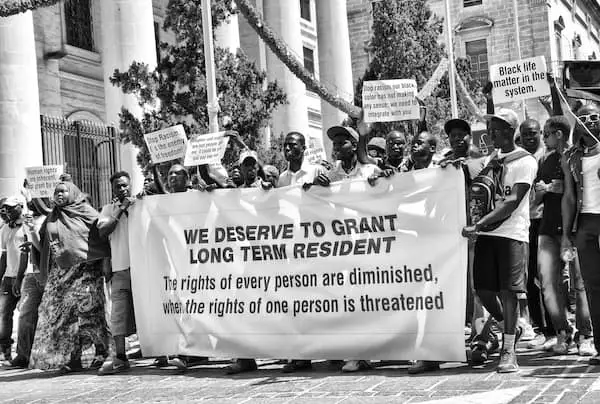The Home Office has been accused of being institutionally racist” according to the draft report which was supposed to have been published last March 2019. This independent review was set up following the Windrush Scandal, but what was the scandal? What took place? and what lessons have we learned?
The history behind Windrush
Between 1948 and 1971 nationals from Caribbean countries have been labelled the Windrush generation. The UK brought these nationals on ship MV Empire Windrush, which arrived at Tilbury Docks, Essex, on 22 June 1948, bringing workers from Jamaica, Trinidad and Tobago and other islands, as a response to post-war labour shortages in the UK. It is reported to have carried 492 passengers – many of them children.
Some 492 West Indian immigrants on board arrived in the UK, based understandably on news reports in the media at the time, which variously announced that “more than 400”, “430” or “500” Jamaican men had arrived in Britain.
On 22 June 1948, marked the start of the postwar immigration boom which was to change British society. … The majority remained to settle permanently, and now form a central part of British society.
The ship itself made its final voyage in 1954.
How did the UK benefit from Windrush?
Immigration from the Caribbean & West Indies
On 22 June 1948, Britain, with its new reforming Labour government, was a country short of workers. Men and women were needed to rebuild an economy weakened by the war years, especially in those sectors crucial to the reconstruction programme.
These included the production of raw materials such as iron, steel and coal, as well as food.
There was also a huge backlog of essential maintenance and repair work and severe shortages in the construction sector. In the service sector, both men and women workers were needed to run public transport and to staff the new National Health Service (NHS).
It was this prospect of employment that attracted many of the Windrush passengers to leave the Caribbean.
Immigration from India 1948
June that year marked the symbolic start of the postwar immigration boom. Many hundreds of thousands came from India, Pakistan to Britain through the 1950s, not just for short-term work, but settling for good. Immigration has continued and widened ever since, resulting in an ethnic and cultural diversity that would have been unthinkable in 1945.
Immigration from China 1950
During the 1950s and 60s, Britain saw an increase in its Chinese community due to the influx of Hong Kong Chinese. Many of these newcomers went into the restaurant business, setting up takeaways across the UK, with much of their hard-earned money going back to Hong Kong to support family there. Several Chinese takeaways cleverly adapted to their British customers’ tastes in food by offering buttered bread, pies and chips alongside Chinese dishes. The prosperous 1960s, however, also saw a rise in eating out and a more adventurous approach to sampling different cuisines. Today, Chinese food is very much part of the British diet, widely available in the ready-meal form, eaten in restaurants and bought from takeaways, while upmarket Chinese restaurants are now winning Michelin stars and glowing reviews.
Immigration from the Middle East, Turkish national 1950
Greek and Turkish restaurants increased in number and popularity. It is important to remember that while the British were happy to accept these new foods, many were unwilling to accept the communities themselves – numerous minority ethnic restaurant owners have suffered over the years from the racist comments and actions of their customers.
The migration of colonial citizens began slowly. From 1948 when the Empire Windrush arrived until 1952, between 1,000 and 2,000 people entered Britain each year, followed by a steady and rapid rise until 1957, when 42,000 migrants from the New Commonwealth, mainly from the Caribbean, entered. The numbers declined by almost a half in the two succeeding years but by 1960 had increased again to 58,000, and then in 1961 more than doubled, in anticipation of the 1962 Commonwealth Immigrants Act that would restrict opportunities for entry.
By 1961, according to the national population census, the number of people living in England and Wales who were born in the Caribbean was just over 161,000: 90,000 men and just over 71,000 women.
Why did the Windrush Generation not get recognition in the UK?
Over 70 years since the migration of commonwealth nationals to the UK, many were advised by the Home Office that they had lived in the UK illegally and many were forced to leave the UK.
The government’s promise in 1971 that they could stay without having any official documentation these migrants applied for any official documentation proving their settled rights in the UK and hadn’t even applied for a UK Passport throughout their lifetime. To add further insult to injury, the Home Office had held no official records confirming their settled status in the UK, clearly, the government had let the Windrush Generation down.
How did the Windrush Scandal make national news?
The Governments decision to ensure that only resident national would benefit from hospital treatment (NHS) and Welfare Benefits in 2012, meant that people are expected to prove their residency status. This also is the case, if you wish to work in the UK. As many had no such evidence, the Home Office, saw fit to detain and deport, the many that came from the Windrush Generation.
On 21 August 2018, Home Secretary Sajid Javid announced that – after a review of 11,800 cases – 18 members of the Windrush generation who could have been wrongfully removed or detained would get a formal apology from the Government.
Who comes under the Windrush Application?
You could be eligible for the Windrush Scheme if you are:
- a Commonwealth citizen who settled in the UK before 1 January 1973 or has a right of abode
- a child of a Commonwealth citizen parent who settled before 1 January 1973, where you were born in the UK or arrived in the UK before the age of 18
- a person of any nationality who settled in the UK before 31 December 1988 and is settled in the UK
To find out if you qualify to call Shabana Shah on +44(0)1634 789223 or contact us here.

